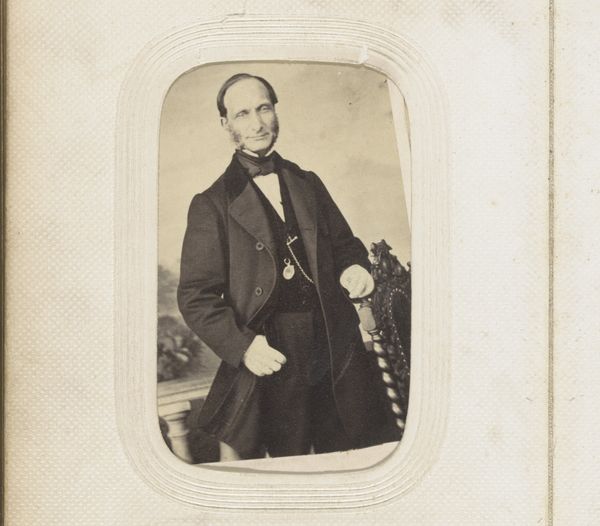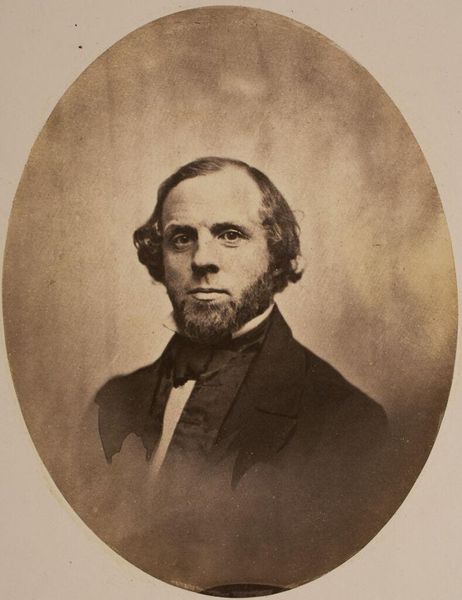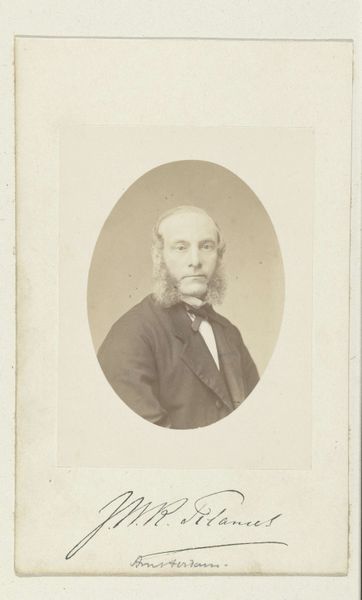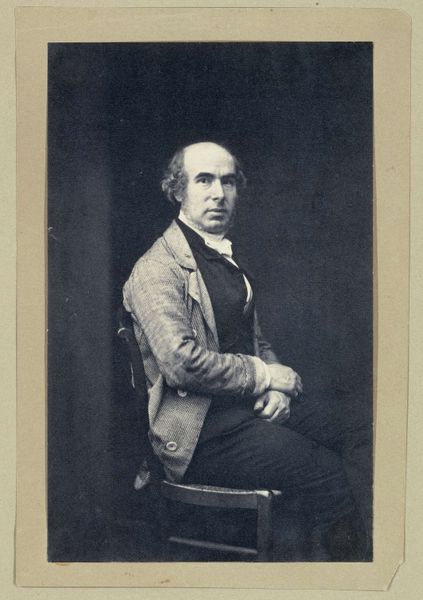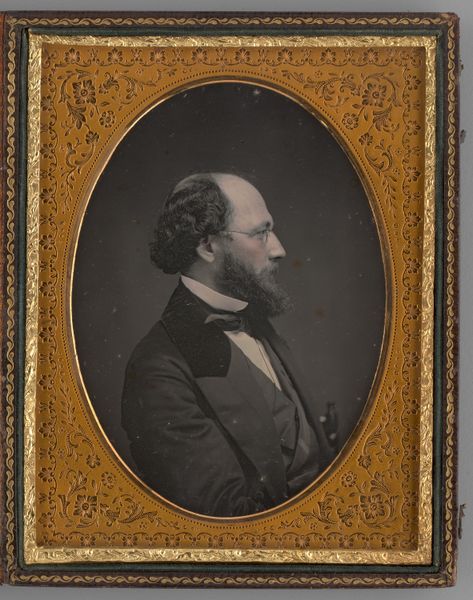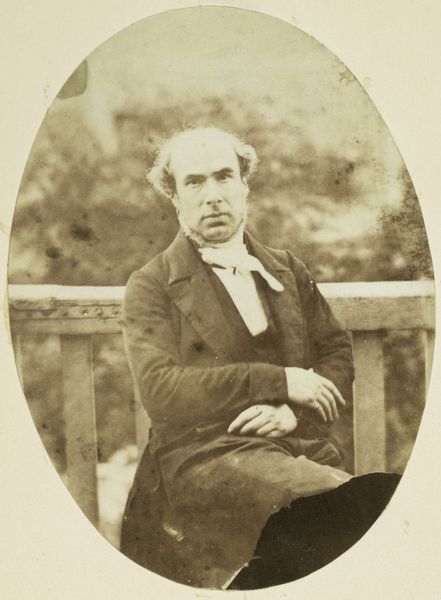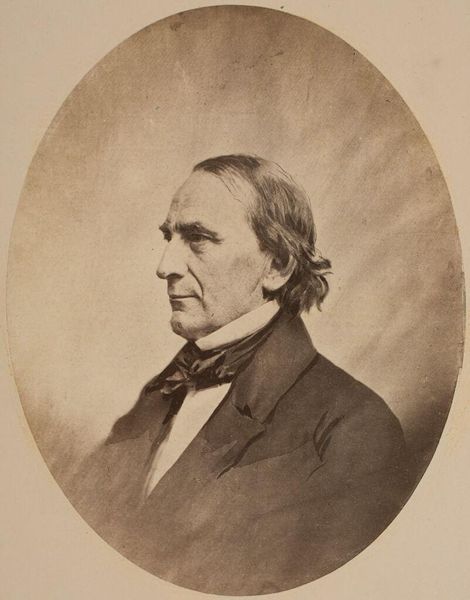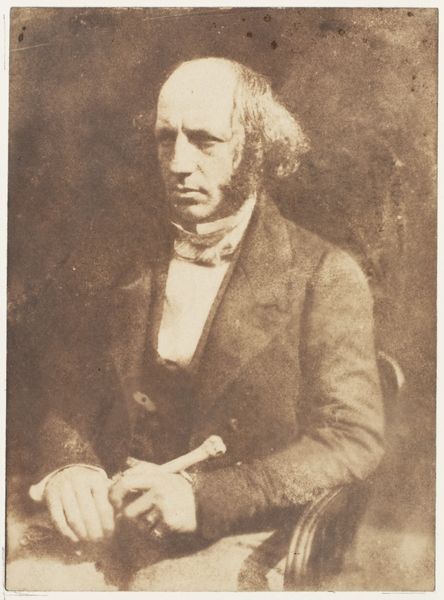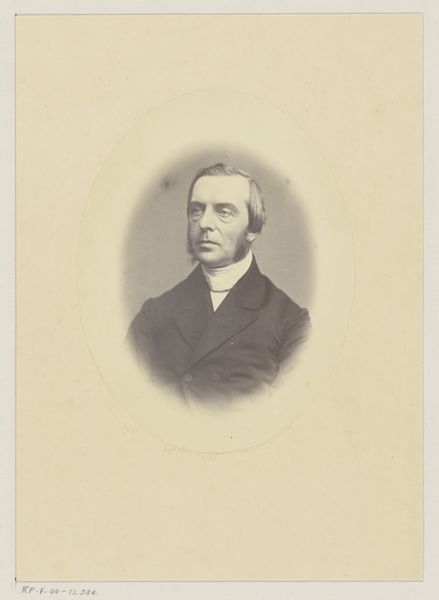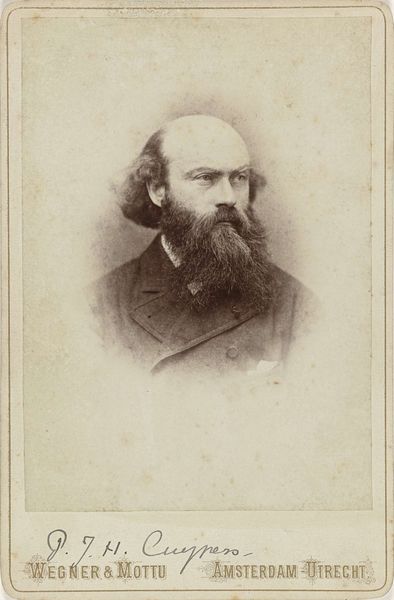
daguerreotype, photography
#
portrait
#
daguerreotype
#
photography
#
historical photography
#
academic-art
#
realism
Dimensions: image/sheet: 18.9 × 13.6 cm (7 7/16 × 5 3/8 in.) mount: 30.5 × 24 cm (12 × 9 7/16 in.)
Copyright: National Gallery of Art: CC0 1.0
Curator: The gaze of Professor Joseph Lovering, captured circa 1855 by John Adams Whipple, speaks volumes, doesn’t it? There’s a directness there, yet… contained. Editor: The initial mood that strikes me is contemplative; but looking closely, it is very materially and socially posed; its formal setting tells of class standing, suggesting a particular relationship to labour and social hierarchy of the era. Curator: Absolutely. This is a daguerreotype, a very early photographic process. Think about that reflective silvered copper plate and the light chemically coaxing this image into being. The way he’s posed, the slight softening of the image... there's a reverence implied, linking this image to a tradition of painted portraiture meant to last centuries. Editor: The clothing is very interesting: a three-piece suit with cravat. Its mass production relied upon factory workers enduring harsh conditions; this image of quiet academia is in fact supported by labour and capital across various industries. And then you must consider that daguerreotypes, though offering an astonishing level of detail for their time, required very long exposure times, presenting challenges for both the photographer and the sitter. Curator: Precisely! These objects carried tremendous weight because of the labour in producing them. Whipple wasn’t just capturing an image; he was, quite literally, imprinting time and a social moment. We tend to think of photography as instant, but here, even the shadows whisper of duration and transformation, almost alchemical. The formal wear communicates so much about this professor's identity. Editor: But I do see the process adding value: the precision of the chemical interaction combined with the careful composition grants a special kind of clarity. I can imagine viewers admiring these images as incredible new products enabled by technology and a growing supply of consumer products. It's easy to think that technology flattens culture, but these materials indicate growing industries that also created new expectations. Curator: That is very true. And to bring it back to Professor Lovering himself, you have to imagine his own awareness of that gravity. He’s not just sitting for a picture; he's participating in a new form of visual immortality. Think of the hopes and anxieties tied up in that. It feels almost shamanistic, this capture. Editor: A fine reflection, it makes one see his expression anew.
Comments
No comments
Be the first to comment and join the conversation on the ultimate creative platform.

